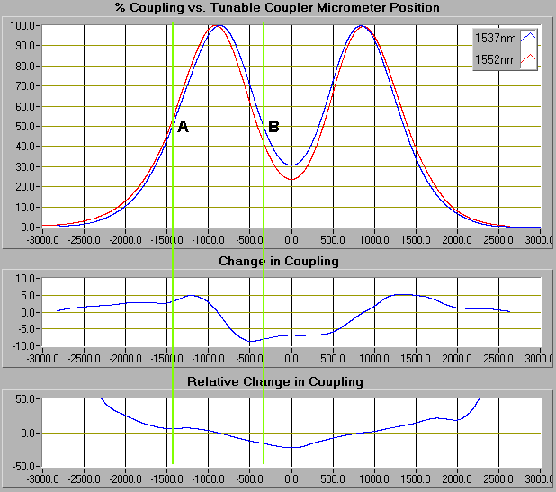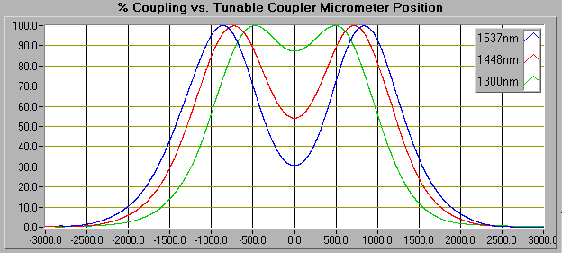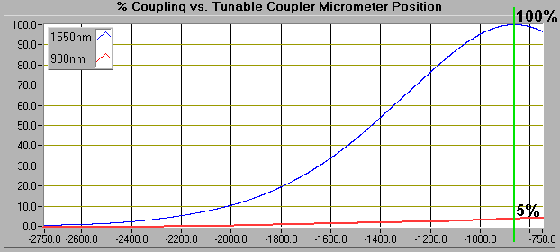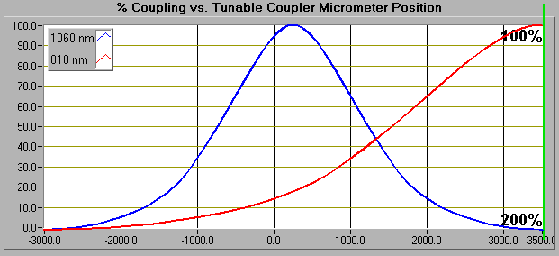Coupler Bandwidth
The coupler bandwidth, or change in coupling ratio with wavelength, is a complex function of coupling ratio. This is shown in the figure below, where the measured coupling ratio curves for a tunable coupler (model 905P) at the wavelengths 1537nm and 1552nm are superimposed.
The tunable coupler operates by varying the core separation between fibers; as the fiber cores approach, coupling increases. If the coupling increases to 100% before fiber core separation is minimized, the phenomenon called overcoupling occurs. Overcoupling causes light to couple back into the original fiber, hence reducing the coupling ratio. It is possible to have several overcoupling cycles for long interaction length and small separation.
As indicated by A on Figure 1, for the first 50/50 (3dB) setting, a 3% change in coupling occurs for 1% change in wavelength.
The coupling position can also be set at the 150% (overcoupled) position, labeled B, which is more sensitive, with a 7.5% change in coupling.
Measured coupling curves for more widely spaced wavelengths are shown in the following figure.
Low loss WDMs (model
954P-P), such as those with ratios 1550/980 and 1060/810, can be manufactured taking advantage of such coupling relationships, as shown below.
Additional Coupling Graphs:
1448nm and 1300nm
1537nm and 1300nm
1537nm and 1448nm



